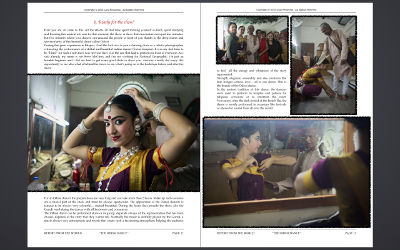The debate practiced by the Tibetan monks is unique and is usually held in two: a defender and a questioner. Usually the role of the defender is for the novices, while the questioner is a more experienced monk (aspect that can change).
Each role has strict rules and none of them can have notes of their arguments and thesis: the monks have to remember everything by heart. The defender is sitting and has the role to assert a thesis and try to defend its truth. The challenger, however, asks questions in an attempt to get the defender to accept statements that are contradictory or absurd.
Example:
"A: Does a farmer have a tail?
B: No, of course not
A: Does a farmer have a cow, a horse or a dog?
B: Yes.
A: Then a farmer has a tail!"
The style of the debate follows a precisely choreographed routine beginning with a ritual invocation of Manjushri, the boddhisattva of wisdom, in a loud high pitched tone. Then the questioner, who is standing, begins the questioning in a very low and barely audible voice. He bends gently forward toward the defender, who is sitting, as a sign of humility and respect. At this point, the questioner is wearing his robe in the customary style, with the left shoulder covered, and the right shoulder bare. These initial gestures and soft speech are part of a skillful strategy designed to bring about a false sense of security in his opponent. The defender presents his thesis. The questioner raises doubts. As the back and forth exchange of questions and answers progresses, the debate grows increasingly animated, impassioned, and physically intense, with plenty of forceful clapping and spirited verbal exchanges.
the defender has three possible replies:
1. “I accept”
2. “The reason is not established”
3. “It does not pervade”
If the questioner has been able to draw the defender into making errors and contradicting himself, the questioner wraps his upper robe around his waist, as a sign of his understanding and control. No longer bending forward, he stands tall and makes forceful sweeping gestures, clapping his hands loudly to stress the power and decisiveness of his arguments. Clapping 2 hands together represents the union of the two aspects of the path: wisdom and method.
See these monks debating so animatedly, take a run and clap loudly in front of their their "opponents", it is very unique and interesting (also noisy).






